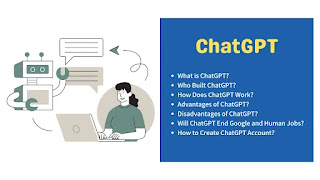Optimizing the HTML structure of a website is a crucial aspect of SEO (Search Engine Optimization). Here are some tips on how businesses can optimize their website's HTML structure for better SEO:
Use proper HTML tags: Use the correct HTML tags (such as H1, H2, H3, etc.) to structure the content on your website. This helps search engines understand the hierarchy and importance of the content on your pages.
Write descriptive titles and meta descriptions: Use descriptive and keyword-rich titles and meta descriptions for each page on your website. This helps search engines and users understand what your page is about.
Optimize URLs: Use descriptive and SEO-friendly URLs that contain keywords related to the content on the page.
Use internal linking: Use internal linking to connect related content on your website. This helps search engines understand the relationship between the different pages on your website.
Use structured data: Implement structured data (such as schema markup) on your website to help search engines understand the content on your pages and display rich snippets in search results.
Optimize images: Use descriptive alt tags for your images and optimize their file size for faster loading times.
Use responsive design: Ensure that your website is mobile-friendly and has a responsive design that adjusts to different screen sizes.
Overall, optimizing the HTML structure of your website can help improve its visibility and ranking in search engine results pages (SERPs). By implementing these tips, businesses can improve their website's SEO and attract more traffic to their site.
What Is SEO – Search Engine Optimization?
SEO, or Search Engine Optimization, is the practice of optimizing a website to increase the quality and quantity of organic (non-paid) traffic from search engines. The goal of SEO is to make it easier for search engines to understand the content of a website and determine its relevance to specific search queries.Search engines like Google, Bing, and Yahoo use complex algorithms to analyze websites and determine how to rank them in search results pages. SEO involves a range of techniques and strategies to improve a website's visibility and ranking in these search results.
Some common SEO tactics include:
Keyword research: Identifying the keywords and phrases that users are searching for and incorporating them into the website's content.
On-page optimization: Optimizing website content, metadata, and other on-page elements to make it more relevant to specific search queries.
Off-page optimization: Building backlinks to the website from external sources, such as other websites or social media platforms, to increase its authority and credibility.
Technical optimization: Ensuring the website is optimized for search engine crawlers, including proper HTML structure, mobile-friendliness, and fast page load times.
Content marketing: Creating high-quality, relevant, and engaging content to attract and retain users and encourage them to share the content on their own platforms.
SEO is an ongoing process, and it takes time and effort to see significant results. However, by implementing these strategies, businesses can improve their website's visibility and attract more organic traffic from search engines.











